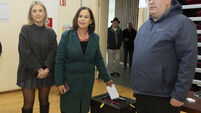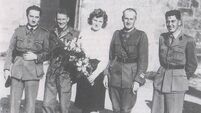Jennifer Horgan: Irish is a storied language and means different things to all of us
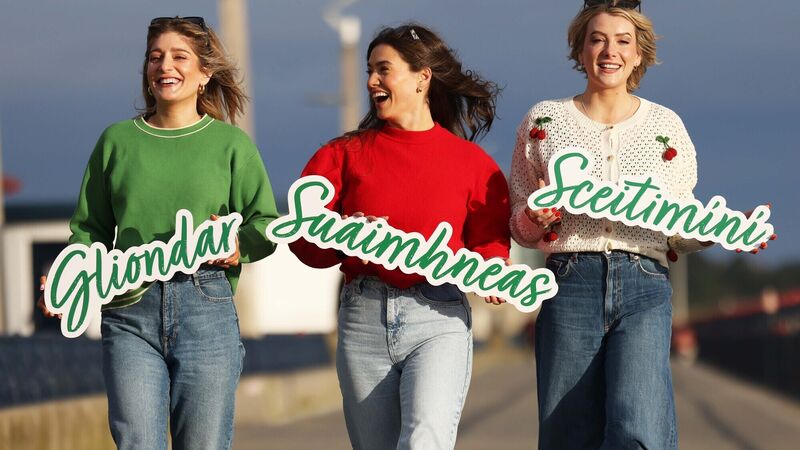
Doireann Ní Ghlacáin, Louise Cantillon, and Síomha Ní Ruairc in Bray, Co Wicklow, showcasing untranslatable Irish words as part of Fáilte Ireland’s Seachtain na Gaeilge celebrations. Picture: Leon Farrell / Photocall Ireland
Tá Gaeilge agam.
It’s an increasingly common statement, proudly announced on T-shirts and badges — a significant skill that may even nudge Catherine Connolly closer to the Áras today.
It often makes me want to ask a follow-up question though: Cén saghas gaeilge? What kind of Irish do you speak?
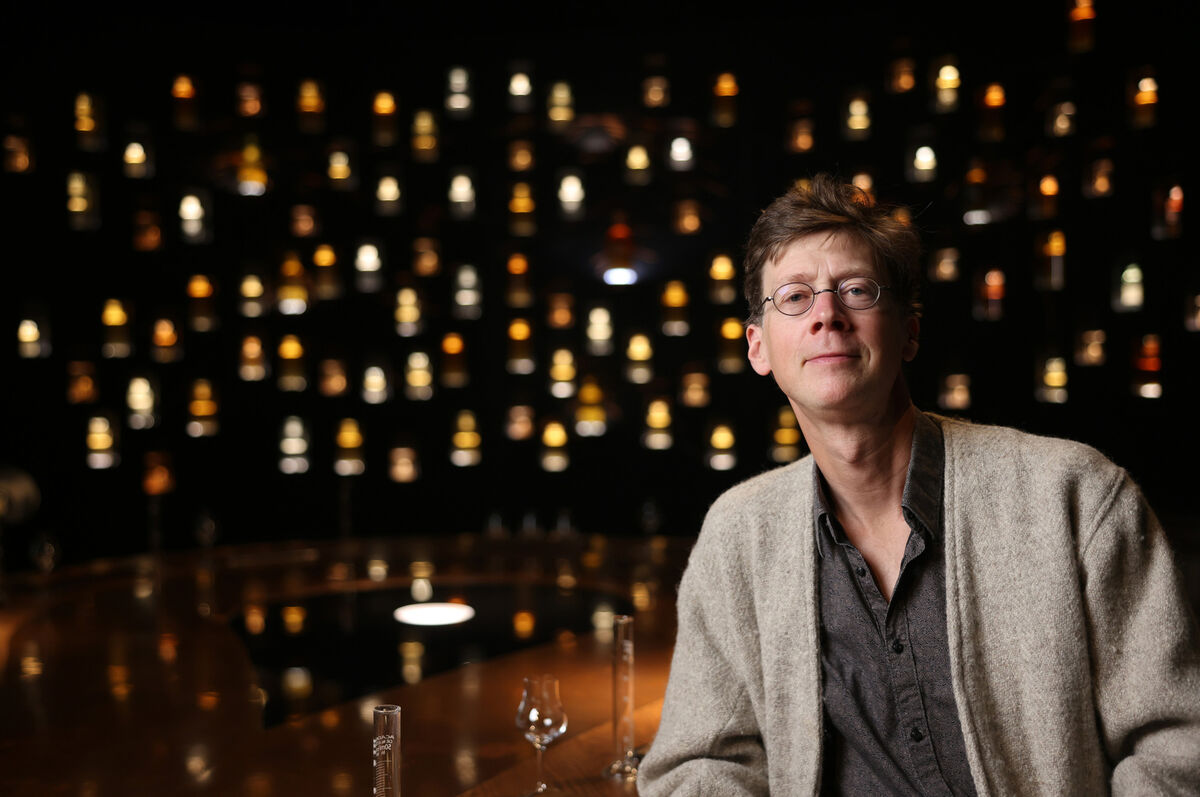
Because there isn’t just one use of Irish. It’s a language after all, defined and redefined from speaker to speaker, age to age. It is also a language with a story, intertwined with periods of oppression and brutality.
Irish can be many things all at once. It can be a language of protest against an “other” or a language of connection and solidarity. It can be threadbare, learned at the school desk, more verb than noun, drowning in half-forgotten declensions.
All of these iterations exist, and potential toxicity can get smuggled in when we don’t pay attention to them. Our national language, in this sense, is no different to our national flag — it can get hijacked, as our flags were once again hijacked this week in Citywest.
My favourite Irish, for what it’s worth, is the purely cultural, ecological Irish language, as championed by the recently deceased Manchán Magan.
This is an Irish that exists even in places you might least expect it. In Turas, to give one example, the project of East Belfast Mission started by Linda Ervine in 2012, designed to bring people together by promoting understanding and acceptance of the shared history and heritage of Ulster. It uses the Irish language and Irish culture to rise above language and culture.
Manchán very much liked to point out what this Irish is not. In a 2020 interview, he said the Irish language “isn’t about flags or politics — it’s about our psyche, our way of seeing the world”.
If you want to explore this version of Irish in more detail I recommend you watch his beautiful funeral mass, available now online.
During the service, Fr Tom Casey tells the story of visiting Manchán and being told by his brother to speak French for a bit of fun. Manchán was delighted. He understood, says the priest, that “different languages dance differently in the world”.
“He knew they weren’t just instruments for talking but a path for walking through the world,” added the celebrant.
Manchán’s brother Ruán reiterated the message, saying: “Manchán loved Ireland but he loved the world as well. He saw the sacred in every tongue, in every creature, in every dawn.”
Ruán Magan added: “He taught us to be proud of our culture but not in a narrow form of nationalism or politics. He loathed that. That was not what he was about, just to be very clear.
“You’ve shown us the path; it’s for us to walk on it,” he said.
His wife Aisling spoke of her deep love for Manchán and her pride at seeing his career flourish as his message spread.
She spoke about the evolution of his thinking, the growth of his wisdom. Saying it started in the “national identity sphere” but went “far beyond that”.
His guard of honour was made up of musicians. He was an inherently peaceful man, with no interest whatsoever in using our national language as a weapon against anyone, including one another.
“You will be my spirit guide for the rest of my life,” Aisling said, “and I know you will be for so many others too.”
It’s nice to think Manchán Magan’s Irish is the Irish spoken by Catherine Connolly, the person now predicted to be our 10th president.
Connolly, who has been vocal about her support for Irish language initiatives, wrote in a bilingual Instagram post that she was "immensely saddened" to learn of Manchán's passing.
"For me, his enduring legacy is demonstrating the rooted connection between our language and our land, there is no distinction in Irish between the speaker and the nature around them, and few people in the world had as profound an understanding of that as Manchán."
Her ability to speak Irish has certainly contributed to her popularity, particularly among young people. Arguably, many young people are more influenced by the Irish of Kneecap, however, not that of Manchán Magan.
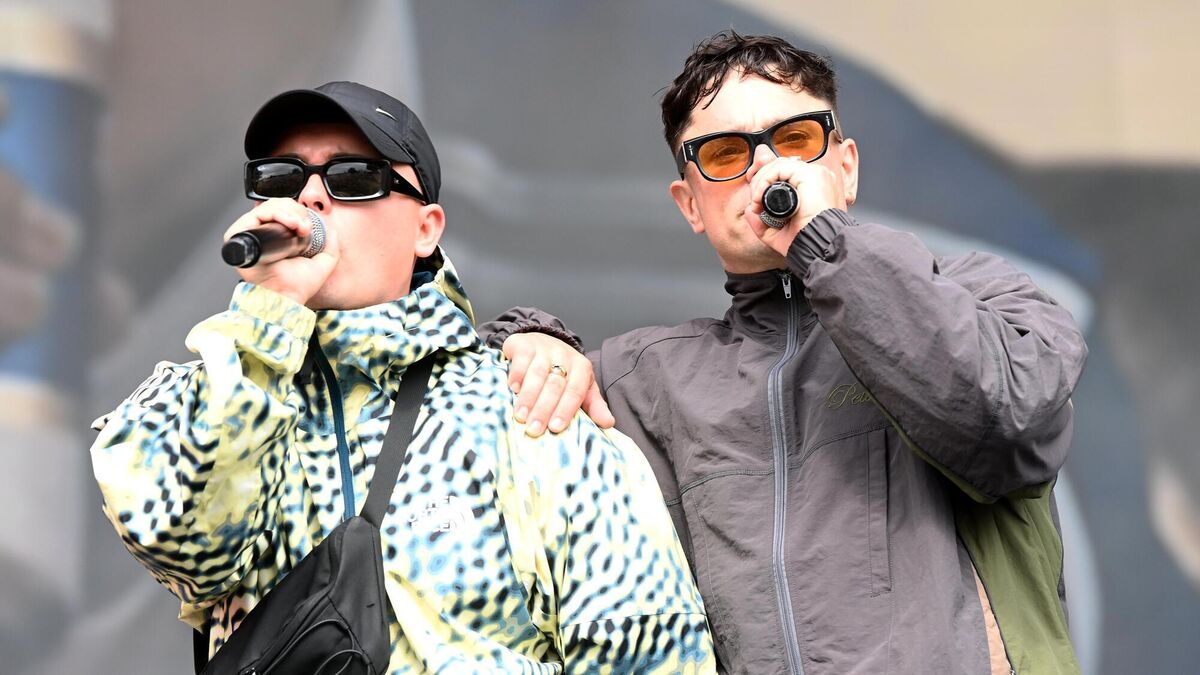
There are crossovers between the two. This Irish is also an impressive version of the language, one that is brilliantly clever and creative, and, as Kneecap emphasise, also non-violent. Indeed Manchán collaborated with Kneecap. I don’t know how he felt about their republicanism but I assume he joined them because their creative focus puts solidarity above antagonism. It is also shot through with satire.
Non-violent, yes, but unlike Manchán’s Irish, it is deeply, deeply political. Their lyrics and stage imagery often include republican symbols, including tricolours, and they’re open about their desire for a united Ireland. Do they stir up anti-English sentiments in young people? Possibly. They certainly express legitimate hurt and rightly record the wrongs of colonialism. They certainly seem to aim the language against empire.
The worry some might have is that this Irish, in the wrong mouths, might turn to something far more corrosive than is intended.
The arts are tricky in this respect — music is open to interpretation and their fervent republicanism complicates things. Saying you do not endorse violence doesn’t mean you won’t incite violence, especially in young people. Music is an art form; it is open to misinterpretation.
I about how Charles Manson found inspiration in the Beatles’ , and certainly there is a fear Kneecap’s Irish, intentional or otherwise, is prodding at barely covered wounds in Northern Ireland.
That is not to say it shouldn’t be enjoyed. It is music, and theirs is certainly not the worst version of Irish being spoken on this island.
Because there is another Irish that is far more narrow — one I will limit to the end of this article. This is the language borrowed by the Ireland is Full protesters, a group we must engage with very seriously now if we are to thwart their powers.
This language drags us backwards and towards violence. In one very real example — it was the exact Irish used online to evade social media platform rules in the run up to the first Dublin riots back in 2023.
Tá Gaeilge agam.
Regrettably, It’s a statement that demands further scrutiny.
This week, the Irish language may very well contribute to Catherine Connolly becoming president.
If she wins, she should spend her presidency not just promoting the Irish language, which she must do, but promoting an Irish language with beauty and connection at its centre above all else.





